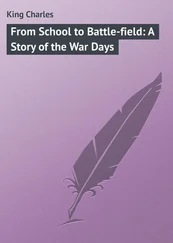Numerous security forces had gathered near the State Regional Administration building. The police standing in front of the entrance had shields. Inside the building you could see people with shotguns. Not so long ago the mayor of Kharkiv, Hennadiy Kernes, was leading the pro-Russian demonstrations. During one of them, on March 1, an angry crowd entered the building and brutally assaulted almost one hundred participants from the local Maidan. One of the most popular Ukrainian writers, Serhiy Zhadan, was injured. He is an anarchist, but he didn’t have any doubts which side of the barricade he should stand on.
Now Kernes has changed sides and was doing everything he could to discourage the crowd from taking over the building or inciting a riot. Although along the march route there were very few police, there were many on the square. Several thousand had been summoned to the city.
I was wearing a light bulletproof vest under my sweatshirt. After the events in Kiev, Donetsk, or Odessa I knew I could expect anything. Clashes can begin at any moment. “You don’t need it here. Everything is under our control,” a policeman reassured me. As it turned out, he was right.
As soon as that march was approaching the Lenin monument, a new one was forming, this time organized by the Communist Party of Ukraine (CPU). Like its equivalents on the former Soviet Union’s territory, the CPU combines chauvinism, conservatism, and anti-Western sentiments with nostalgia for the Soviet Union. Before the Maidan protesters in Ukraine began their action of mass demolition of statues of Lenin, it had been the CPU members who were putting up tents around them to make sure that the Comrade was sleeping peacefully. From way back they have been organizing all the holiday celebrations associated with the past before 1991. They have been the loudest in opposing integration with NATO and the European Union. Although at the same time that they present themselves as the closest friends of “the proletariat,” without batting an eye they have accepted laws that can be described with many phrases but “in the interest of ordinary people” is not among them. During the Russian Spring they chose “the proletariat,” too. Their tents are standing in Donetsk, Luhansk, and other Donbas cities. Frequently, their activists have become involved personally in the actions of the separatist governments. Right after Victory Day, on the orders of the Parliament, the Prosecutor’s Office looked into their activity. May 9 was their last day to show off.
Several thousand people have joined their march. When security forces refuse to let a motorcade into a closed street, a light shoving match with the police takes place. Dozens of men are charging, as a result of which a police officer falls to the ground, and the cars drive through.
When the demonstrators get to the German Honorary Consulate, a group of people are screaming: “We will burn Berlin again.” They are joined by a musical band and the parade is led by people with the banner: “No to fascism and nationalism.”
Despite apparent success the demonstrators are dispersing in a hurry. They are announcing that there won’t be any referendum in two days (as in Donbas), nor ever. Since that day nobody has seen any federalists or separatists in Kharkiv. Clearly, you can’t get anything more out of the “defenders of the Russian-speaking population.” Thus the pro-Russian demonstrators have lost a crucial piece of their southeastern puzzle.
How to Disarm a Separatist
Dnipropetrovsk. It is an important arms, space, and business center (the majority of Ukrainian banks have their headquarters right here). According to Maryna, a local activist, taking over the southeastern Ukrainian territories will be profitable for Russia only if they include the Dnipropetrovsk region. Unlike Donbas, for example, it is a net contributor to the Ukrainian budget. However, the pro-Russian demonstrators had to forget quickly about Dnipropetrovsk being their banking capital.
Demonstrations against the new government and for integration with Russia started here at the beginning of March. On March 1 a meeting of several thousand people took place. Its participants placed flags of Soviet Ukraine and Russia on the City Council building. One of the meeting’s organizers was the Union of Soviet Officers, whose members showed up with a banner: “In memory of those who died for the motherland and the Soviet government—be worthy of them.” There were no incidents. Just one man began to destroy candles and flowers laid by Euromaidanists on the pedestal of the statue of Lenin—only his shoes were left after the monument was sawed off—to commemorate those who died during the protests.
During this and subsequent demonstrations people expressed their approval of Crimea’s annexation to Russia (but not in such numbers anymore). There were no attempts to take over any administration buildings. Unlike in Donbas, here both the police and the new regional authorities acted decisively. Oligarch Igor Kolomoyskiy immediately and forthrightly declared himself on the united Ukraine side and together with his coworkers did his best to keep the situation under control. It is interesting that before the Maidan, Kolomoyskiy was regarded as an opportunist. Now he became a national hero. On the Internet you can find an altered poster of Captain America showing Kolomoyskiy holding a shield with a trident. The poster is titled “The First Avenger.”
Kolomoyskiy likes to parade in a black T-shirt decorated with red lettering that spells out “Yido-Bandera” and a menorah combined with a trident. In this way he refers to his Jewish roots and his patriotism, and he makes fun of Russian propaganda that depicts Ukrainian nationalism as frightening. This oligarch is the biggest sponsor of the Jewish community in Ukraine. He is well connected in Israel, thanks to which, according to some sources, he has access to consultants from its intelligence agency.
When I arrived in Dnipropetrovsk in May I had the impression that I had come back to Kiev at the times of the Maidan. Many residents were wearing blue-and-yellow ribbons. I am walking through the city. Some kids are riding bicycles with blue-and-yellow Ukrainian flags. They are circling around the fallen Lenin. Above their heads, among the ads on the outside walls of the shopping center, a jumbotron is flashing Ukrainian and European flags. Every now and then the anthem is played. A little further there are three boys—two with drums, one with bagpipes. When they finish the anthem, the passersby are shouting, “Glory to Ukraine.” Nobody is booing, nobody is making sarcastic comments.
Here life takes its usual course. Dozens of residents and visitors spend their free time walking along the river. “It is peaceful here and I hope it will stay this way,” says Vitalij. Like other residents, he is afraid that the military conflict will arrive here, too, but he unambiguously opts for Ukraine. He is grateful to the oligarch who has seriously protected the region from the conflict.
In Dnipropetrovsk they found a unique way to to “disarm” the separatists: they were invited to join in. “If we work with the separatists, they won’t unite and they won’t reach for arms,” says the vice governor and businessman Boris Filatov, closely associated with Kolomoyskiy. The Union of Soviet Officers even got an office in one of the administration buildings. Other groups were neutralized in a very simple way: they don’t have time for political activity because they are involved in practical and useful causes. Some take care of the monuments, others get access to athletic facilities and run sports classes. In the end, the pro-Russian organizations lost their enthusiasm for fighting to join Russia.
But while promoting collaboration, they didn’t ignore real defense. Thanks to Kolomoyskiy’s backing and financial support (reluctantly acknowledged by the authorities), the infrastructure necessary for newly formed units was created very quickly. “Patriots were guaranteed the best conditions,” claims Filatov. The National Defense Headquarters was established in the administration building. That’s where people who are interested can find out how and what to join: the Defense Ministry (the army) or the Interior Ministry (National Guard and police). As a result, volunteer battalion Dnipro-1 and territorial defense units were formed. What is more, volunteer battalion Donbas is carrying out exercises on the border of the Dnipropetrovsk and Donetsk regions. The volunteer battalions have been dubbed “little men in black” in response to the Russian “greens.”
Читать дальше

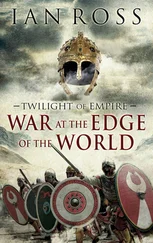

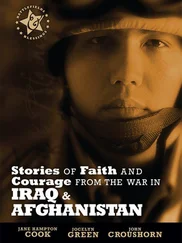
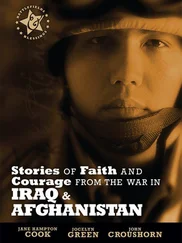
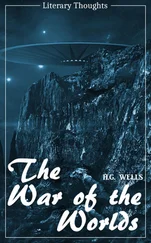
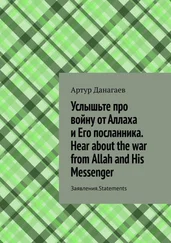
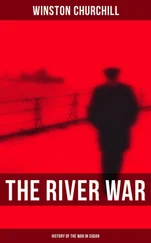
![Theresa Cheung - The Dream Dictionary from A to Z [Revised edition] - The Ultimate A–Z to Interpret the Secrets of Your Dreams](/books/692092/theresa-cheung-the-dream-dictionary-from-a-to-z-r-thumb.webp)



